Dimmable lighting is a completely new approach to energy consumption. Thanks to a small device – a dimmer – they not only control the light, but also save energy. To implement the idea, special LED lamps are used.
- What are dimmable lamps and fixtures?
- Varieties of dimmers
- By installation method
- By way of management
- According to the principle of work
- Pros and cons
- How does a dimmable LED lamp work?
- Operation of dimmable LED lamps
- Wiring diagram
- Brightness control
- Life time
- Why can’t ordinary lamps be used with a dimmer?
- How to choose the right dimmable lamp?
- Lamp characteristics
- Differences between a dimmable light bulb and a regular light bulb
- Buying risks
- What are the problems at work?
- The lamp is not adjustable in the power range of 10-15%
- flicker
- buzz
- The dimmer is not suitable for 220 V
- The most popular manufacturers
- Osram
- Philips
- Gauss
- Uniel
What are dimmable lamps and fixtures?
Lamps, regardless of the principle of operation, have a certain power, on which the intensity of the light flux depends. To increase or decrease illumination, users have to replace light bulbs or turn on a certain number of them, if this is provided by the electrical wiring. Dimmable lamps allow you to change the luminous flux at your discretion at any time using a dimmer – a direct or alternating current device, which is also called a dimmer and dimmer. Manufacturers also offer LED lamps – this is a separate group of lighting devices that do not need additional regulators, since the “stuffing” of the dimmer is mounted inside them. The intensity of lighting is changed with a remote control or buttons located on the case.
Varieties of dimmers
Dimmers (dimmer) – electronic devices that differ not only in design, but also in the principle of operation, design and other features. Before you buy a dimmer, familiarize yourself with their structure and capabilities.
By installation method
Dimmers differ from each other in the way they are installed. When choosing the type of device, take into account the features of the wiring and interior. There are three types of dimmers:
- For outdoor installation. These are overhead devices similar to ordinary light switches. Inside the device – a dimmer for LED-lamps. Plus – ease of installation. No need to drill a recess in the wall, the device is mounted directly on it. Outdoor dimmers are convenient in rooms where the interior is not a priority. They are also in demand in rooms with external wiring.
- For indoor installation. Under them, you have to make recesses in the walls, but they look beautiful in the most presentable interiors.
- For DIN rail. The device itself is placed in the electrical panel, and power control is carried out using a remote control.
By way of management
The change in illumination is carried out using different control systems. All of them cope well with the task, and the choice of one or another type of dimmer depends mainly on preferences. Brightness controls are:
- Rotary. The simplest mechanical switch. The light level can be changed by turning the knob clockwise or counterclockwise.
- Rotary push. In appearance, they are the same as rotary ones, but their design allows you to turn on the light of the brightness that was set during the last turn on by pressing.
- Push-button. These models look more modern and organically fit into the interiors. The illumination changes after pressing the key.
- Touch. Produced with different designs. Sensors are in the form of circles or rectangular panels.
According to the principle of work
There are dimmers that work on alternating and direct current. The first have differences in the principle of voltage change. There are two types of AC dimmers:
- Cut-off at the leading edge. This is the simplest and cheapest option. For use with dimmable lamps only. The use of dimmers with a leading-edge cutoff causes interference in electrical networks – this affects the operation of the TV and other sensitive devices. Scheme of work:
- the end of the half-wave is applied to the load, cutting off its beginning;
- a voltage of a given amplitude is applied to the lamp, which decreases after the transition of the sinusoid through the zero mark.
- Cut-off at the rear. Can work with non-dimmable lamps. The adjustment is better – without interference with electrical appliances, but there is one minus – the illumination of the lamps does not change from zero, but in a certain light range.
Pros and cons
It’s hard not to be interested in dimmable lamps – the ability to change the intensity of lighting looks very tempting. Before you buy such lamps or fixtures, evaluate their advantages and disadvantages.
Advantages of a dimmable lamp:
- The choice of operating mode allows the lamp to be used both for intense illumination and for slight illumination in the evening.
- Dimmable LED bulbs last longer than non-dimmable ones. If the latter are connected to a dimmer, they will quickly burn out due to the impact of extreme loads that their stabilizers cannot withstand.
- It can change the temperature of the light transmission, which allows you to change the perception of space.
- Does not emit infrared or ultraviolet rays. Thanks to this, objects, fabrics, furniture upholstery, wallpaper and other things that fall under the action of lighting do not burn out.
- Can be used for room zoning. To do this, individual lamps are connected to a dimmer and, by changing the brightness of the lighting, illuminate the desired areas of the room.
Dimmer lamps have much fewer disadvantages , but for many consumers they often turn out to be decisive:
- The main disadvantage is the high cost. Moreover, both the lamp itself and the control switch are expensive.
- Difficulties with the choice of lamps and dimmers are not excluded – they must match each other and be compatible. Some manufacturers produce lamps that are compatible only with their own dimmers.
- They can interfere with electrical appliances, sometimes flicker, buzz and crackle (if the lamps are of poor quality).
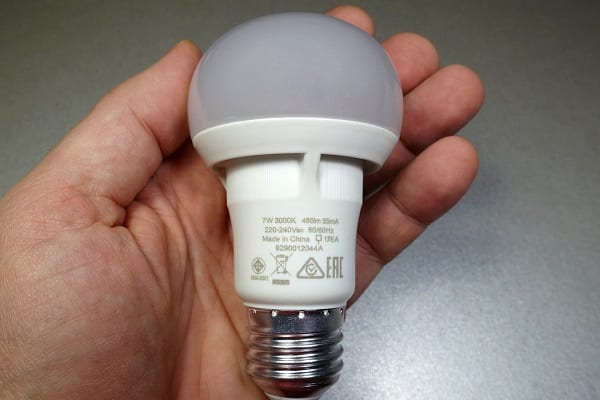
How does a dimmable LED lamp work?
The use of dimmable lamps is not difficult. The user only needs to turn a switch or press a button to change the illumination. The processes taking place in the lamp and the dimmer are much more complicated. How scientists “forced” the LED lamp to change the intensity of the light flux:
- The response of a non-dimmable lamp to adjustment. When trying to adjust the brightness of a conventional lamp, at first nothing changes – the lighting device does not react in any way to turning the dimmer knob. This is explained by the driver program. He has a clear task – to maintain the values of current and voltage at a given level. If the input voltage gets too low, the device finally reacts – it simply turns off the diodes (if the lamp is from a good manufacturer) or starts flashing (budget products). She “doesn’t understand” how to act.
- The principle of operation of a dimmable lamp . The inventors solved this problem by changing the driver circuitry. In a dimmable lamp, it monitors the level of voltage that is applied to its input. As soon as it changes, the driver automatically changes the current passing through the LED.
The dimmer changes the power of the consumer by adjusting the voltage supplied to the load. Power decreases/increases along with voltage drop/increase. This dependence is expressed by the physical formula: P \u003d I * U. Current (I) and voltage (U) are interconnected by Ohm’s law: I \u003d U / R. By increasing the load resistance (R), we reduce the voltage and power of the lamp. The load resistance is adjusted using:
- resistors;
- capacitors;
- chokes.
By itself, a dimmable lamp is nothing special. Only in conjunction with the regulator, it acquires new functions. Dimmers operate on semiconductor devices that change resistance. The principle of operation of the dimmer depends on its type. There are the following dimmers:
- Resistive. The working parameter is formed by changing the resistance of a rheostat or a variable resistor connected in series with the load. The maximum resistance corresponds to the minimum current and minimum brightness. The disadvantage of such regulators is the constant power consumption. Because of this, it is not possible to save on electricity with it.
- Triac. Their work is based on the work of a triac – a semiconductor element that changes the current curve to the desired parameters. This is the best option for dimming, as it allows you to save on lighting by reducing the intensity of the light flux.
Triac dimmers, unlike resistive ones, regulate not only brightness, but also color temperature.
Operation of dimmable LED lamps
In order for dimmable lamps to serve properly and for a long time, operate them correctly. If you choose and connect the LED bulb correctly, there will be no problems with its operation.
Wiring diagram
The scheme for including adjustable LED devices in a circuit with a dimmer depends on what voltage they are designed for. Switching options:
- Lamps for 220 V. The dimmer is installed in the break of the load circuit (lamps).
- Lamps for 12 and 24 V. In this case, a power supply is placed between the low-current dimmer and the network.
The dimmer itself has dimensions and mounts identical to a standard light switch, and they are installed in the same way – they are placed in a mounting recess or fixed on the wall, depending on the design. To realize the idea of adjusting the brightness of lighting, it is enough to change the usual switch to a dimmer. It’s easy to do. Both devices have 2 terminals that connect to the same wires to which the switch was connected. When connecting a dimmer, polarity is unimportant. But if there is a phase indicator screwdriver, and it is possible to determine the phase, it is recommended to connect the phase wire to the L terminal (as required by the manufacturer).
Brightness control
In dimmable lamps, there is a special driver that performs pulse-width modulation. This device changes the brightness from 5 to 100%. The intensity of illumination is regulated by changing the length and frequency of the pulse. The third parameter – amplitude – remains unchanged. Switching the brightness is carried out mechanically or by touch – it depends on the type of dimmer. In any case, a comfortable and smooth adjustment of the lighting level is ensured.
Life time
The service life of dimmable LED lamps is affected, first of all, by the manufacturer. On average, they are able to burn from 15 to 40 thousand hours. Factors affecting the duration of service:
- microclimate in the room. Lamps last the longest at moderate temperatures and humidity.
- Plinth. Models with ventilation holes in the plinth are distinguished by a longer service life.
- Circuit. The service life is reduced due to power surges and poor-quality wiring.
- Connection. Lamps last longer if they and the dimmer are properly connected to the mains.
- Quality. Products of low quality last less. The service life can also drastically reduce manufacturing defects.
Why can’t ordinary lamps be used with a dimmer?
Ordinary lamps cannot be connected to the same circuit as a dimmer. It’s all about the design. A simple LED lamp has a micro-rectifier that converts the input AC voltage to DC. An ordinary LED bulb can only be in two positions – on or off. The dimmer, on the other hand, suggests a completely different approach to the operation of the lamp. With its help, a smooth and gradual change in the level of illumination is carried out. If an ordinary, non-dimmable lamp is screwed into a circuit with a dimmer, it first blinks and then turns on 100%. If the lamp burns at full power in the same circuit with a dimmer, both devices become unusable after a short time. Inside the dimmable light bulbs there is a special block by which the brightness is adjusted.
How to choose the right dimmable lamp?
The dimmable lamp has the same design as conventional counterparts. It consists of diffuser, radiator and base. They screw into standard cartridges.
Lamp characteristics
Dimmable lamps are sold in stores, differing from each other in a variety of parameters. When buying LED lamps, you can not focus only on the appearance, manufacturer or price. Today, there are a lot of models of LED light bulbs on the market, and not every consumer will immediately understand them. Characteristics:
- Working voltage. Its fluctuations in the network can exceed the critical 230 V. In order for the lamp to work stably, it is desirable that it be designed for the widest possible range – 170-260 V.
- supply voltage. On sale there are products designed for 220, 12 and 24 V. Lamps with a voltage of 12/24 V are designed for lamps that have voltage converters.
- Colorful temperature. The color of the light flux depends on this parameter – it can be yellow or white. The first is considered warm, the second – cold. At a color temperature of 4-5 thousand Kelvin, the light is white, at 2.7-3 Kelvin – yellow.
- Light flow. It is measured in Lumens and determines the brightness of the lamp. The indicator varies between 200-2,500 Lumens.
- Color rendering index RA. Determines the uniformity of the color elements of the light flux. At low RA values, it is difficult to distinguish color shades. The higher it is, the less strain on the eyes.
- Power. Manufacturers produce products from 1 to 25 watts. The more power, the more intense the lighting.
- Plinth. Today you can buy a dimmable lamp with all types of socles found in conventional counterparts. Plinth types:
- E27 – standard base, which is used in chandeliers and lamps installed in residential premises;
- E14 – used in floor lamps, chandeliers, sconces, lamps;
- GX53 – for lamps and fixtures installed in rooms with a high level of humidity;
- G9 – for luminaires used in spot lighting;
- GU10 – for decorative lighting.
- Guarantee. The presence of warranty obligations allows you to return (exchange) a lamp that has burned out before the expiration of the warranty period.
When buying light bulbs, pay attention to their shape and dimensions. They should fit not only the base, but also the size of the ceiling lamps, chandeliers and lamps.
Differences between a dimmable light bulb and a regular light bulb
In appearance, dimmer lamps are the same as conventional LED bulbs. If you put two LED lamps side by side – dimmable and non-dimmable – it is impossible to distinguish them. Miniature devices that change the luminous flux are located inside the lamp. A dimmable device is recognized only by marking. The package must have one of the following inscriptions/icons:
- “dimmable”;
- dimmable;
- image of a rotary dimmer knob.
If the lamp says “not dimmable”, it is not suitable for dimmable lighting.
Buying risks
If the buyer does not have experience with dimmable LED lamps, do not rush to buy. The main risk when buying is purchasing a model that is incompatible with an already installed dimmer. Many buyers do not have the opportunity to understand in advance whether the lamp is suitable for a dimmer or not. Tips for those who go to buy an LED lamp:
- Agree with the seller about the possibility of returning the product if its parameters are not suitable.
- Take light bulbs from well-known manufacturers – this increases the chances that they will fit the dimmer according to their characteristics.
- Do not take low-power lamps up to 10 watts. They cost less, but they give a small light flux, a small control range and “cold” lighting, which is unpleasant for the eyes.
- Pay attention to the base so that it fits the cartridge. There are threaded and pin bases. Check this point and find out what diameter of the base you need.
For those who do not know how to choose a light bulb according to its parameters, it is recommended that you first read the technical documentation for the dimmer and lamp. Shopping center consultants also help you make the right choice.
What are the problems at work?
Problems can arise when using dimmable LED lamps. To eliminate malfunctions, it is necessary to know the reasons that provoked them.
The lamp is not adjustable in the power range of 10-15%
The light emitted by the LED lamp can be reduced to 10% of the maximum. If in the range from 10 to 15% of the power it is not possible to change the brightness level, then the sweetheart is of poor quality. The second option – the dimmer is not suitable. The solution to the problem is to buy high quality products from well-known manufacturers and with a minimum threshold for switching on and off.
flicker
If the circuit uses a switch that has an indicator light, the light will flicker when the light is turned off. The solution to the problem is to turn off (remove) the indicator or install a new switch. Another possible cause of a flickering dimmable lamp is a driver failure. In this case, the bulb needs to be replaced.
buzz
If the light bulb makes an extraneous sound, then it and the dimmer are incompatible in different ways. Due to a mismatch of devices, the lamp may not only buzz, but also turn on / off from time to time. The solution to the problem is to replace the dimmer or LED lamps. Another reason for the buzz is a driver failure. In this case, replacing the lamps is also indispensable.
The dimmer is not suitable for 220 V
If the 220 V lamp is of high quality, any dimmer model for a standard network is suitable for it. If the dimmer is cheap and of poor quality, it may not be up to the task. To avoid a problem, a dimmer is bought after consulting with a specialist or after checking it in operation.
The most popular manufacturers
When buying LED lamps, pay attention to the manufacturer. This allows you to purchase high-quality products with a long service life. There are several well-known brands on the domestic market offering high quality lamps.
Osram
This German company is known throughout the world as a manufacturer of high quality lamps, fixtures and other lighting equipment. It produces LED lamps in a wide range, with bases of various types and sizes.
Pros:
- high color rendering index – above 80;
- a large selection of lamps;
- excellent performance, including low-cost models;
- economy.
The
disadvantages of products from Osram include:
- high cost;
- the possibility of marriage.
Philips
Dutch world famous company producing lighting equipment. The brand uses innovations and produces products with a long service life – up to 40 thousand hours.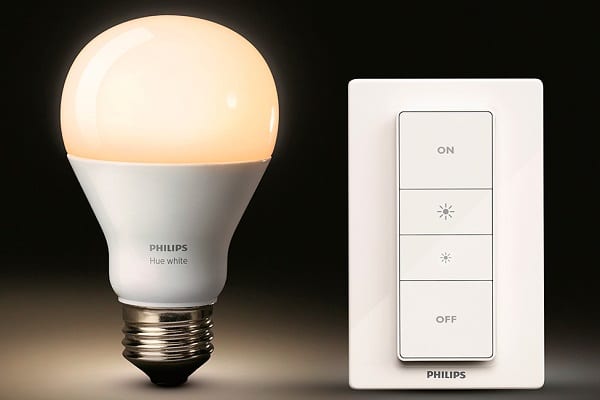
Pros:
- maintaining brightness for a long service life;
- high energy efficiency;
- safe for eyes due to specially set temperature parameters and lack of flicker;
- a wide selection of lamps;
- There are models in which the color temperature is regulated.
Minuses:
- high price;
- small scattering angle for inexpensive models.
Gauss
Domestic Gauss lamps are distinguished by a wide input voltage range (185-265 V), which expands the possibilities of their use in areas with unstable power supply and low-quality power supply. Lamps predominantly with saturated bright white light.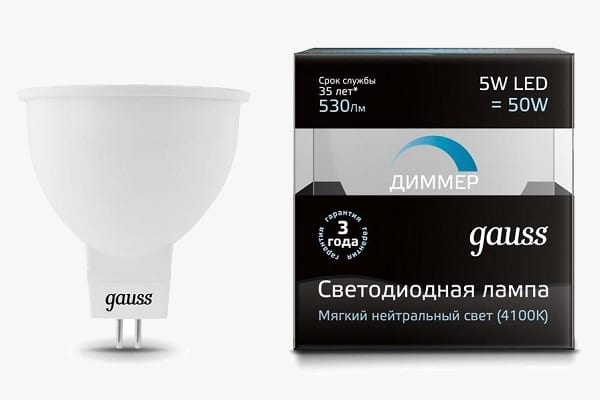
Pros:
- high color rendering index – reaches 90;
- long service life – up to 50 thousand hours (if translated into everyday use, the lamps work for about 35 years);
- warranty periods – 3-7 years;
- beautiful design, suitable for modern high-tech interiors and others;
- many models with lighting temperature switching.
Gauss presents a series of lamps that implement the principle of step dimming. They do not need a dimmer – it is built into the lamp.
Minuses:
- are expensive;
- rarely sold in stores (must be ordered online);
- not compatible with many switches and dimmers – you have to check for compatibility before buying.
Uniel
Another domestic manufacturer, in which the Crystal and Palazzo series are especially popular. The lamps of this company are universal, they work with almost all AC dimmers. They have a matte bulb, a standard base, like conventional incandescent lamps. They operate in the range of 175-250 V.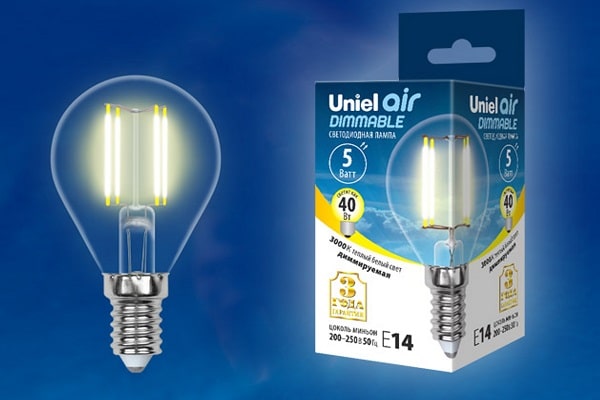
Pros:
- high color rendering – up to 80;
- wide model range;
- moderate cost;
- do not reduce brightness when the voltage drops to 133 V.
Minus – do not work with switches equipped with indicators. Dimmable lamps allow you to not only adjust the lighting to your needs, but also save energy. The main problem is device incompatibility. To avoid this, carefully study the technical parameters of lamps and dimmers before buying.

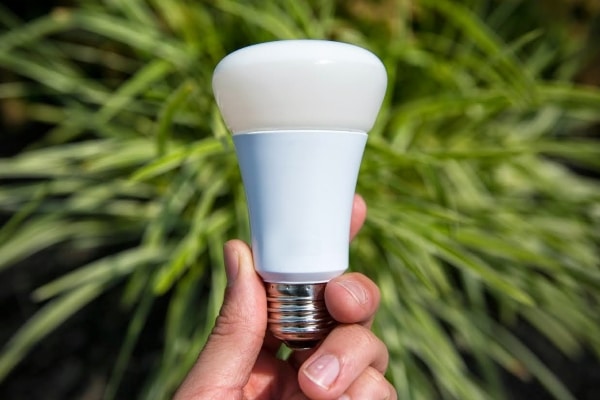

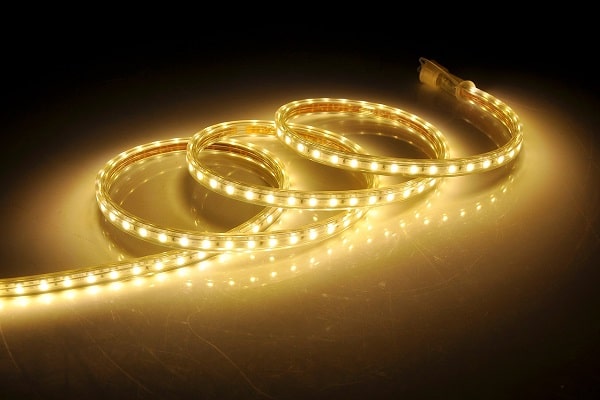

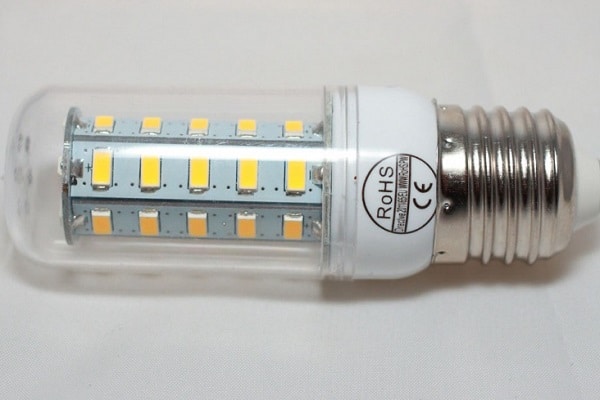
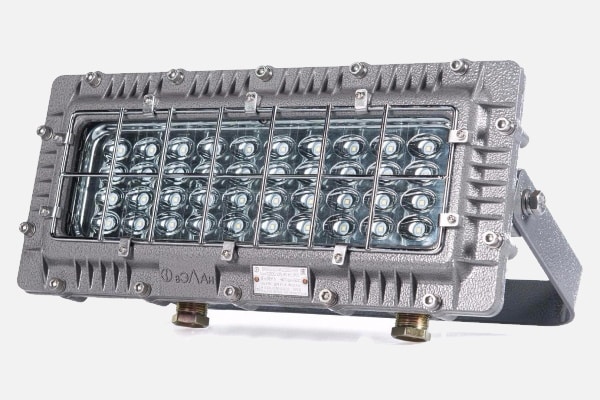

Как раз собираемся делать ремонт и думали установить диммеры во всех комнатах. Но что-то прочитала я эту статью и засомневалась, нужны ли они нам. Всё-таки и так дорого выходит их установить, а тут ещё и столько проблем, не знаешь, с чем в итоге столкнешься: то ли с гудением, то ли с мерцанием. Проще наверно регулировать интенсивность освещения количеством включенных одновременно лампочек. И экономия на диммерах – довольно сомнительная вещь: соизмерима ли в итоге переплата за установку и специальные лампочки с экономией на электроэнергии? Непонятно.
У нас такие стоят. Мне очень удобно. Когда дома грудной ребенок очень удобно регулировать яркость света. Экономят электроэнергию, что тоже большой плюс.
Такая лампа – это хорошее приобретение, но тут важно понять, что в этом случае не стоит жалеть деньги. Потому что в этих лампах самое важное качество. Если сэкономили и купили лампы не высокого качества, то потом могут возникнуть проблемы, например, неприятный треск, так же может-быть несовместимость, если производители разные. Мы когда ремонт делали долго выбирали освещение и решили, что лучше выбрать именно эти лампы, пусть это будет дороже, но хватит на дольше, это первое, что было важно. А второй факт за покупку и установку именно этих ламп – это возможность менять режимы освещения. Я люблю свет, но для меня важно, чтобы утром было ярко, а ночью приглушенно, потому что не сплю без света и муж согласился. Сделали освещение этими лампами и очень довольны. Поэтому я ни разу не пожалела средств, которые мы потратили.
Купила лампу, сначала все было хорошо, светило тоже хорошо, нравится как можно контролировать свет, и они дольше могут гореть, очень хорошо что есть защита от возгорания. Но немного дорогие.